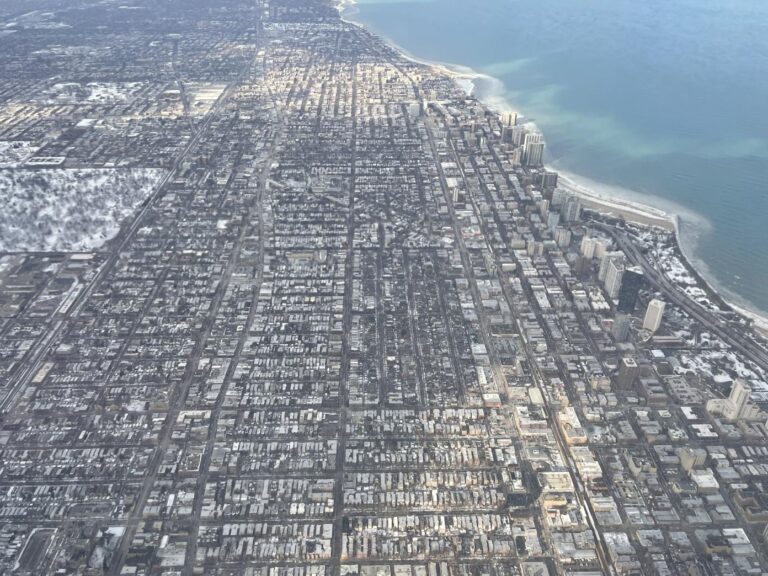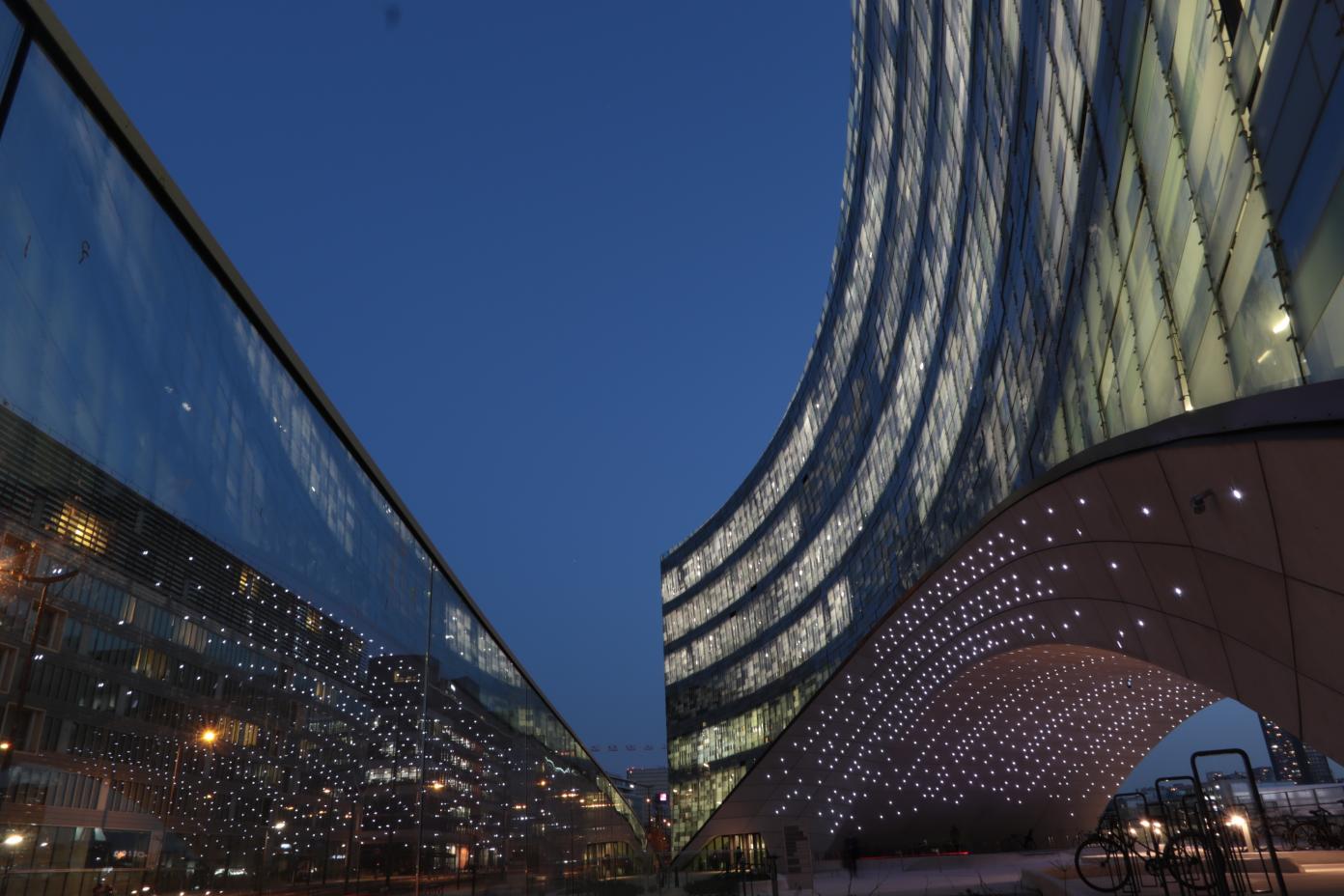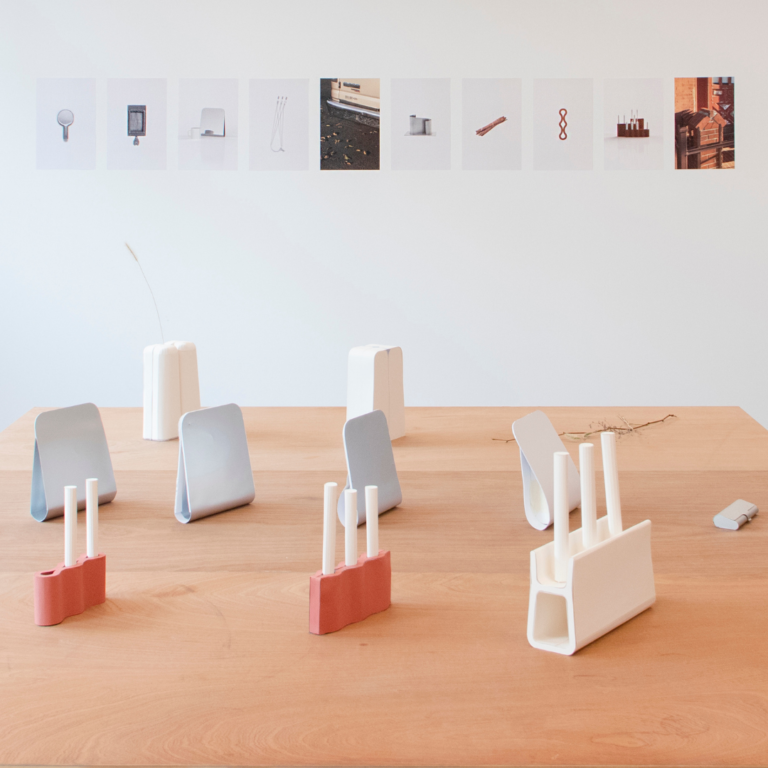
Where Are We Going? Towards an Illuminated Night!

Courtesy of BOA Light Studio
By BOA Light Studio
To know where we are going, we must gaze at the night, welcome the freedom it brings, and make out the lights breaking through the darkness. Such a stance drives the work carried out by BOA Light Studio as they light buildings around the world and enable us, over one Night of Ideas, to escape the frames imposed by daytime and the hustle that comes with it. The goal? To allow the imagination and the unexpected to spread out, disrupt, and question our bearings.
A few days ago, I read this on a piece of graffiti in Paris: “Someone told me I’d die one day, so I live by night.”
We may not know where we’re going, but we can take that sentence as our starting point. Each day is followed by a night; each night is a new beginning. The night is both an end and the promise of a renewal. And there are so many different kinds of nights!
Western cities have three successive nights: an active one, when the sun has set but the day’s activities continue; an urban one, when night-workers roam the city while everyone else prepares for sleep; and a natural one, when light pollution is reduced to a minimum to allow a bit of true night for the plants and animals. That kind of night reconnects us to the natural world and our place within it as living beings.
The tempo of city nights is mainly set by artificial light. Before its invention, urban activities took place under candle light, then gas light. Nights were thus governed by the time it took a candle to burn down, then by the need to save on gas. Before the advent of electricity, an opera lasted for the duration of a candle… and when the candle went out, there was darkness, with only the moon to alleviate it. The utter darkness of an unlit night was, and still is, terrifying. It triggers an anxiety linked to non-seeing, to seeing absolutely nothing, to the impression of blindness, of being deprived of one of our senses.
BOA is interested in nocturnal perceptions, by what we see and don’t see, and how that makes us feel.
Night is a territory, a shared space-time that everyone experiences differently through their senses, and differently from one night to the next.
In “Le Rationalisme appliqué” (1949), Gaston Bachelard refers to “the invention of the light bulb” that, “until the nineteenth century, represented a break with all of the lighting techniques used throughout human history. All the old techniques required a material to be burned. The technical art of Edison’s light bulb [invented in 1879] was to prevent a material from burning. The old technique was one of combustion; the new technique is one of non-combustion.”
We see the shift described by Bachelard as the beginning of a great history of night(s), a history that we enjoy inventing and analyzing. When architecture was illuminated by other sources than the implacable sun, cities acquired a new face.
The advent of urban electric lighting in the public space revolutionized our relationship to night in the city. Night—which had been a time for the invisible and the un-showable, for hidden activities—was rendered accessible. The lack of daylight and the presence of light in the night allow for a form of privatization of public space, which is no longer reserved for crime and illegality, but can also accommodate a form of intimacy. Many people prefer to wander the city by night than by day. Night-time encounters draw people together, give them a sense of belonging to the same species. It can be easier to speak to a stranger in a bar in the middle of the night than to an individual at their desk in the middle of the day. In the daytime, we are desperately alone; at night, we are free. Free to sleep, to party. The usual time framework no longer applies. Night has become the time for rational thought, while daytime brings madness. We might be convinced that the darkness of night causes anxiety and irrational fear, but what becomes of that fear if night is no longer synonymous with obscurity? It is an interesting paradox: in the modern world, anxiety arises from our relationship to reality in the light of day; ultimately, we only think realistically about life at night. At night we seek lucidity; we see the world as a reflection of ourselves (few people are truly themselves in the daytime). The daytime saves us from our own imaginations, from ourselves, while the night brings us face to face with who we really are.
But, over the decades, the increasing number of night lights in all walkable places has come to reflect our era’s obstinate desire to do away with all difficulties, to make comfort the second priority (after safety) of those urban amenities. But prescriptive and standardized illuminations create systematic and functionalist perceptions. In the past, people closed their wooden shutters to protect themselves from the sun; now, we close them to shield ourselves from the light of the night, to rediscover its darkness. We might even have the feeling that public lighting is disciplining our bodies and our lives; that, beyond its safety purpose, it is part of a system linked to the powers that attempt to regulate human suffering. In our view, we should move away as soon as possible from the prescriptive, functionalist approach, away from the facile repetition and comfort of our current nightscapes.
We also ensure that we do not simply fall back on the functional approach, but also consider the shadowy spaces that leave room for the imagination and allow for the unexpected. We believe that there is an aesthetic dimension to any discussion of night.
In a light such as that of the Moon, we no longer see colors, but shapes; when these shapes disappear into the night, our imagination comes into play. Which is not to say that light is our enemy–on the contrary, we can tame it, make minimal use of it to rediscover the poetry of a shadow, the wonder of a colored gleam. Poetry has multiple forms and expressions; it can trigger a myriad of sensations.
In his groundbreaking short movie “Electric Nights” (1928), Eugène Deslaw zoomed up close to create his amazing superimpositions of black and white, electrified city nights, shimmering neon signs… Where now we refer to light pollution, Deslaw saw poetry. Those were Deslaw’s nights.
There is a balance to be found between electric night, moonlight, and dawn. We have a real responsibility: night—or nights—should not be suppressed. They connect us to what remains of the animal within our human beings. Being a living creature means being emotionally attached to an environment and able to reinvent ourselves biologically. Each sunrise is the most elementary means of self-reinvention. But, depending on the night we have just spent, the arrival of a new day can seem like something truly extraordinary.
We should not consider electric lamps simply as man-made products, but as a means of connecting people to their natural environment as subtly and delicately as possible. In order to know where we are going, rather than focusing on technology, we should opt for observation, the culture of the night and its sub-cultures, in the original sense of the term. The night has a lot to teach the day.
This tale of the night is in part the result of the THINK TANK DE LA NUIT, whose first edition was held on June 17, 2021 in Vincennes, France. Organized by F.Maman/BOA, with the participation of architect Philippe Stanfield Pinel, co-founder of Boa Light Studio, who will also speak at the Night of Ideas in Chicago on May 12, 2022.
Sign up for the Villa Albertine Magazine newsletter

